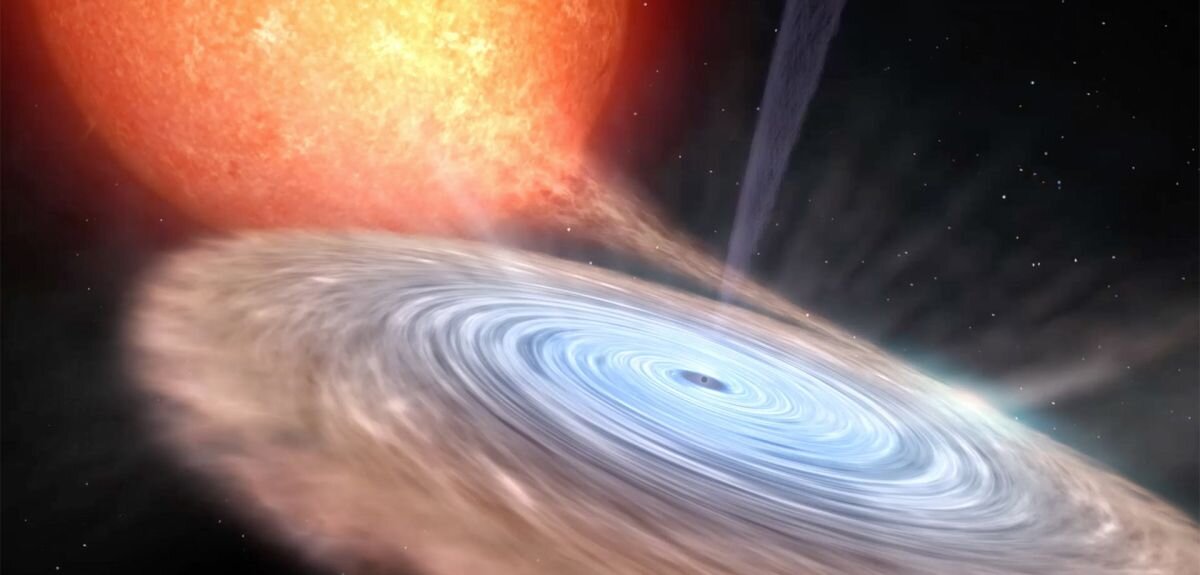X-ray binary stars are systems consisting of an ordinary luminary and a neutron star or black hole. They emit a lot of energy in the X-ray and gamma ranges. Scientists have studied how this happens.

X-ray binary stars
Researchers from the University of Oxford have attracted several large radio telescopes to find out in detail how X-ray binary stars are arranged. These objects are binary systems consisting of an ordinary luminary and a black hole or neutron star.
The mass of an extreme object that is part of such a system is quite large. Therefore, it always pulls a part of the matter falling on it, heats up and partially turns into X-ray or gamma-ray radiation.
It has been established for a long time that this matter, before falling on a neutron star or a black hole, is located in the accretion disk around it. Theoretical calculations showed that the disk should not be stable and its internal parts should fall about once an hour and be replaced by a new matter.
Scientists reveal the mechanism of radiation
But these theoretical ideas have not yet been confirmed by observations. So far, only one X-ray binary star, which includes a black hole, has demonstrated something similar. But this time scientists were able to study this mechanism in detail for a binary system with a neutron star Swift J1858.6-0814.
The team for its research was formed back in 2018 immediately after the discovery of this system. The observation was carried out using the Karl G. Jansky Very Large Array. It is located in New Mexico and consists of 27 large antennas.
The results of these studies have been published only recently. Comparing them with the data of optical telescopes helped to reveal the full picture. The inner part of the accretion disk really falls on a neutron star. But it is not completely absorbed, but is thrown out in the form of gas jets.
These jets have an approaching speed of light and emit energy in the X-ray range. At the same time, the rest of the time, when matter does not fall on a neutron star or a black hole, they are not observed at all.
Now researchers are looking for new examples to study. They want to prove that all X-ray binary stars have a similar radiation mechanism and want to find out what variations it has.
According to phys.org
Follow us on Twitter to get the most interesting space news in time
https://twitter.com/ust_magazine

